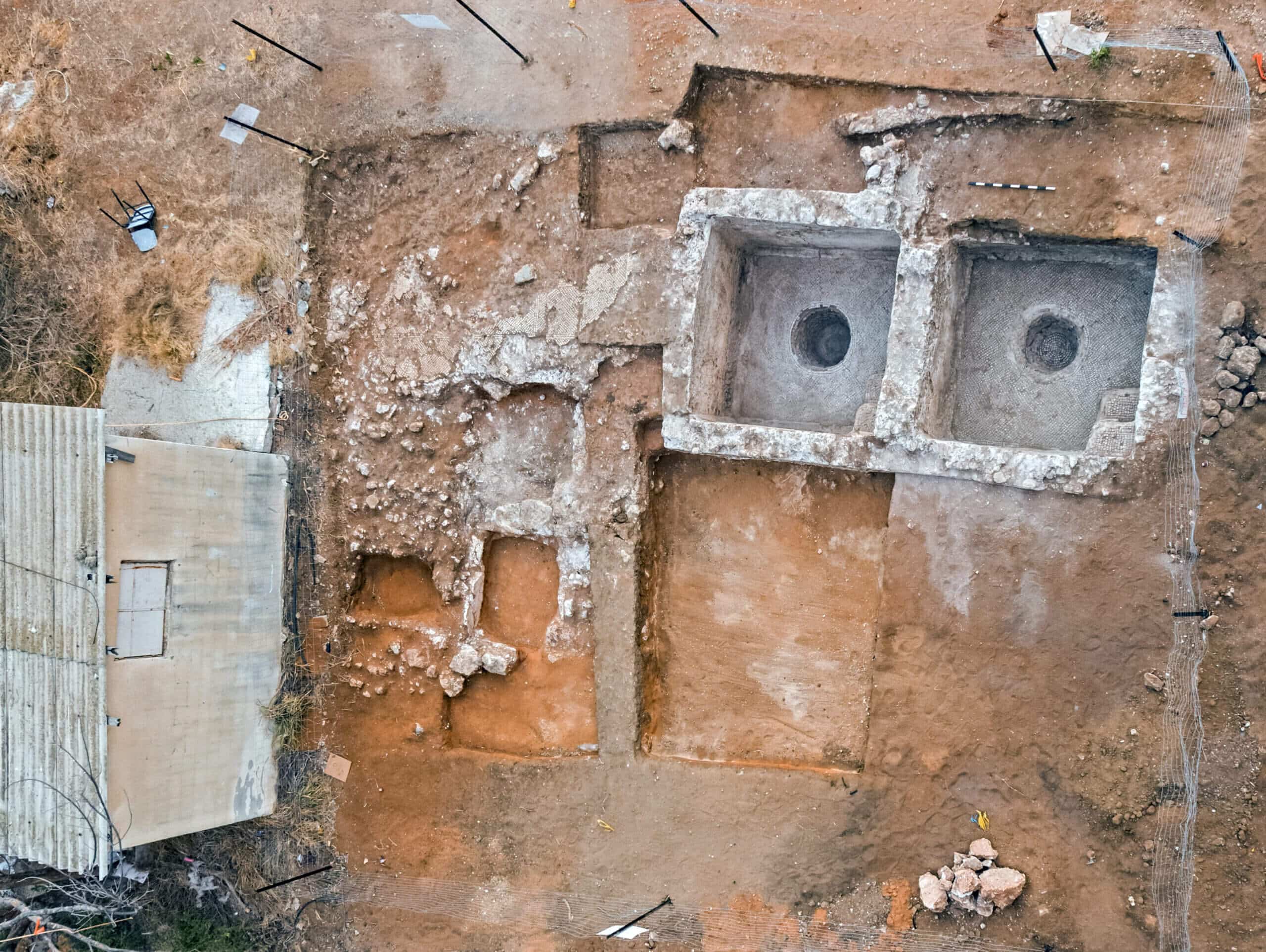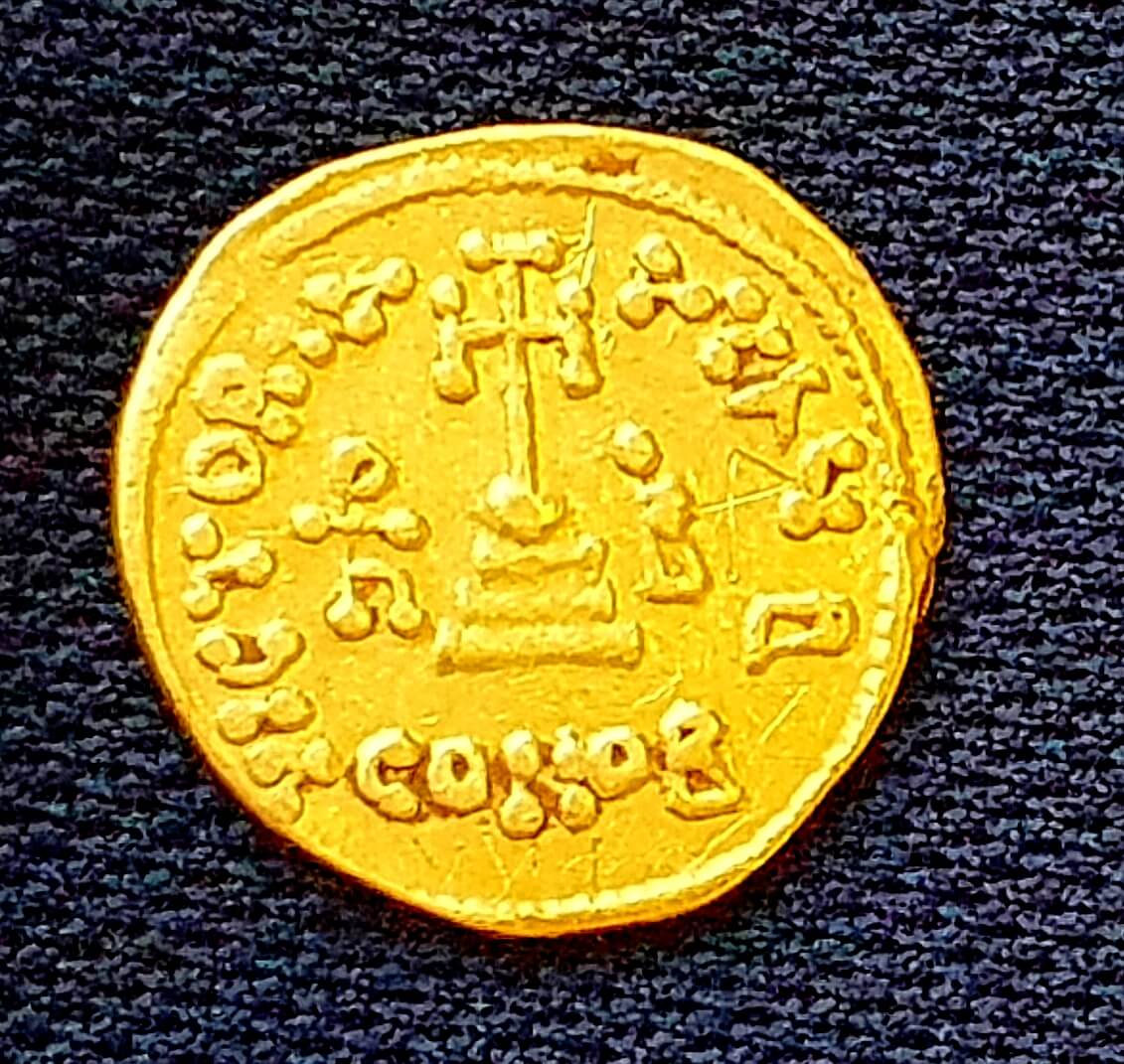Ramat Hasharon will soon celebrate its 100th year, but it turns out that it is much older than we thought. Archaeological excavations by the Antiquities Authority, which are taking place in preparation for the establishment of a new neighborhood initiated by the Sharon Municipality, revealed, among other things, a large wine cellar, a gold coin, and a bronze chain for hanging a chandelier

Evidence of life in the Ramat Hasharon area as early as 1500 years ago was discovered in an archaeological dig by the Antiquities Authority in Ramat Hasharon. The excavation is being conducted as part of the Ramat Hasharon municipality's initiative to establish a new residential neighborhood south of the planned "recreation park", bordering Tel Aviv.
Ramat Hasharon has a longer history than one might think. "During the excavation, we discovered evidence of agricultural-industrial activity that took place here during the Byzantine period - about 1500 years ago. Among other things, we uncovered a large winery for wine production with a mosaic floor, plastered facilities, and the foundations of a large building - which was used, perhaps as a warehouse, and perhaps even as a manor house." says Dr. Yoav Arbel, director of the excavation on behalf of the Antiquities Authority. "Inside the buildings and facilities we found fragments of storage jars and many cooking pots, which seem to have been used by those who worked here in the field. We also found stone craters and millstones, which were used for grinding wheat and barley kernels, and probably also for grinding spice and medicinal plants. Some of the stone tools are made of basalt, which originates from the Golan Heights and the eastern Galilee."
One of the rare and surprising findings discovered in the excavation is a gold coin, minted in 638 or 639 by the Byzantine emperor Heraclius. On one side appears the emperor with his two sons, and on the other - a cross on Golgotha Hill, on which, according to Christian tradition, Jesus' crucifixion took place. It is interesting to know that an inscription was also found on the coin simply engraved in Greek letters, and possibly in Arabic as well. It seems that this is the name of the person who owned the coin, who "marked" it and treated it as a valuable asset.
According to Dr. Robert Cole, Head of the Coins Branch at the Antiquities Authority, "The coin contains a variety of information about the end of Byzantine rule in the Land of Israel, historical events such as the Persian invasion and the appearance of Islam, information about Christian and pagan symbolism, and about the local population living in the land in those days."

Another special find is a bronze chain for hanging a chandelier for glass candles. Chandeliers of this type were usually found in churches.
After the conquest of the land by the Muslims, in the 7th century AD, a workshop for the production of glass, and a warehouse were established on the site, among other things, where four particularly large jugs were uncovered. The jars were found sunken into the floor of the room, and it seems that they were used to store seeds and other products, in order to protect them from pests and climatic conditions. "It seems that during this period they not only worked on the site but also lived there, because the remains of houses and two large baking ovens were found there," says Arbel. Among the tools of the period, complete pottery candles that were used for lighting, and local and imported bowls for serving food, some of them decorated, were also uncovered. According to the general findings, it can be estimated that the site was inhabited until the 11th century AD.
Avi Grover, Mayor of Ramat Hasharon: "I am thrilled with the findings and we have already started, together with the managers of the Neve Gan North project, to think about how we will integrate the findings into the future neighborhood. I want every resident to be able to enjoy and learn from life here in ancient times. These days, we are working on legacy plans for the 100th year. It adds another huge touch to life here on this earth."
According to the Director of the Antiquities Authority, Eli Escozido, "The material heritage that we reveal and preserve is the property of the iron sheep of this country. The Antiquities Authority sees great importance in making the findings accessible and in partnership with the community, which will create a human connection through time, between the present and heritage."
According to Diego Barkan, Tel Aviv district archaeologist at the Antiquities Authority, "This is the first archaeological excavation being conducted at the site, which was known in a very partial way, from an archaeological survey on the surface of the ground. The Antiquities Authority believes that this is a great opportunity to integrate the ancient remains into the planned city park."
More of the topic in Hayadan:

One response
Congratulations on the find. The cross is probably a combination of the wooden cross, the Jerusalem cross and the Byzantine cross. Very interesting anyway. It is well known that the area, despite its certain distance from the sea, almost kissed the sea at that time. And another, cynical comment. Most of the findings from the period do not, obviously, point to a Jewish presence, at least a massive one, in the known areas of the Land of Israel. Every find that is uncovered in our areas is to be congratulated